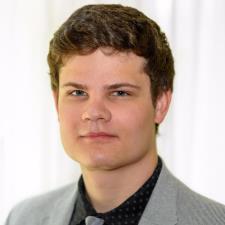The quantization step size, Δcap delta
Δ
, is calculated by dividing the peak-to-peak amplitude by the number of quantization levels: Δ=AppL=10256≈0.0390625cap delta equals the fraction with numerator cap A sub p p end-sub and denominator cap L end-fraction equals 10 over 256 end-fraction is approximately equal to 0.0390625
Δ=𝐴𝑝𝑝𝐿=10256≈0.0390625
.The number of bits per sample, nn
𝑛
, is found by taking the base-
22
2
logarithm of the number of quantization levels: n=log2(L)=log2(256)=8 bits/samplen equals log base 2 of open paren cap L close paren equals log base 2 of 256 equals 8 bits/sample
𝑛=log2(𝐿)=log2(256)=8 bits/sample
.
The Nyquist sampling rate, fsf sub s
𝑓𝑠
, is determined by multiplying the bandwidth by 22
2
: fs=2×Bandwidth=2×1000 Hz=2000 samples/secondf sub s equals 2 cross Bandwidth equals 2 cross 1000 Hz equals 2000 samples/second
𝑓𝑠=2×Bandwidth=2×1000 Hz=2000 samples/second
.
The number of bits to be transmitted per second, Rbcap R sub b
𝑅𝑏
, is calculated by multiplying the number of bits per sample by the sampling rate: Rb=n×fs=8 bits/sample×2000 samples/second=16000 bits/secondcap R sub b equals n cross f sub s equals 8 bits/sample cross 2000 samples/second equals 16000 bits/second
𝑅𝑏=𝑛×𝑓𝑠=8 bits/sample×2000 samples/second=16000 bits/second
.




